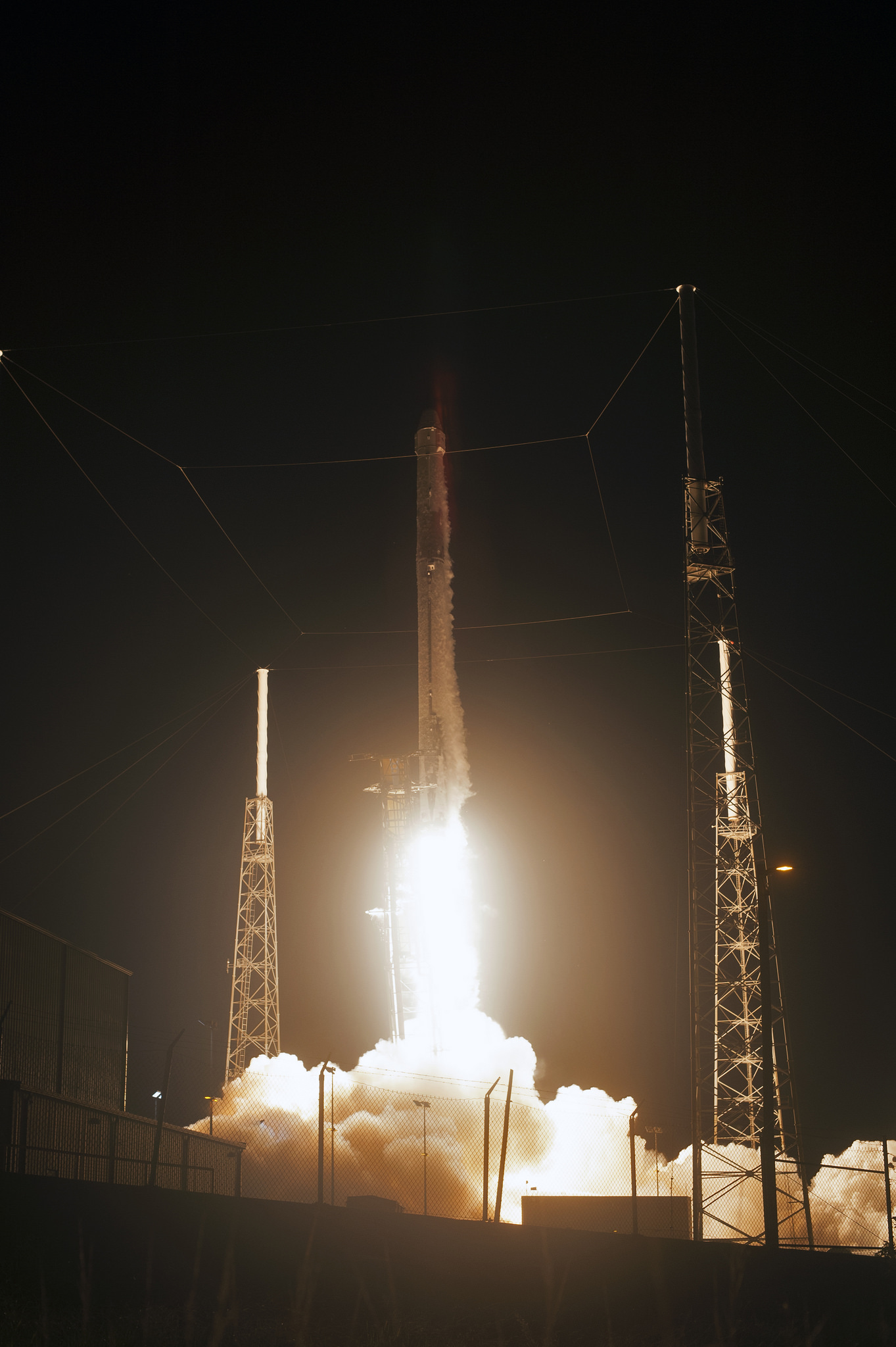Editor’s note: NASA and SpaceX are now targeting Wednesday, Dec. 5 for launch of the 16th SpaceX cargo resupply mission to the International Space Station. The launch was moved to Wednesday after mold was found on food bars for a rodent investigation prior to handover to SpaceX. Teams will use the extra time to replace the food bars. The launch time for Wednesday is 1:16 p.m. EST. NASA TV coverage will begin at 12:45pm EST, followed by the post launch news conference at 3:15 p.m. Dragon will arrive to the space station on Saturday, Dec. 8. Live coverage of the rendezvous and capture will air on NASA Television and the agency’s website beginning at 4:30 a.m., with installation coverage set to begin at 7:30 a.m.
NASA commercial cargo provider SpaceX is targeting 1:16 p.m. EST Wednesday, Dec. 5, for the launch of its 16th resupply mission to the International Space Station.
The Dragon spacecraft will carry supplies and payloads, including critical materials to directly support dozens of the more than 250 science and research investigations that will worked by the space station’s Expeditions 57 and 58 crews.
Among the research it will bring to station, the Dragon’s unpressurized trunk is carrying the Robotic Refueling Mission-3 (RRM3) and the Global Ecosystem Dynamics Investigation (GEDI). RRM3 demonstrates the storage and transfer of cryogenic fluid, which is critical for propulsion and life support systems in space. While the Robotic Refueling Mission Phase 2 (RRM2) demonstrated tasks leading up to coolant replenishment, the actual transfer of cryogenic fluid in orbit will be carried out for the first time with RRM3, using liquid methane. GEDI will make high-quality laser ranging observations of Earth’s forests and topography required to advance the understanding of important carbon and water cycling processes, biodiversity and habitat. Mounted on the Japanese Experiment Module’s Exposed Facility, GEDI will provide the first high-resolution observations of forest vertical structure at a global scale.
Dragon will reach its preliminary orbit about 10 minutes after launch. It will then deploy its solar arrays and begin a carefully choreographed series of thruster firings to reach the orbiting laboratory two days later on Saturday, Dec. 8. When it arrives, Expedition 57 Commander Alexander Gerst of ESA (European Space Agency) and Flight Engineer Serena Auñón-Chancellor of NASA will grapple Dragon. Anne McClain of NASA will assist the duo by monitoring telemetry during Dragon’s approach. After Dragon’s capture, ground controllers will send commands from mission control in Houston for the station’s arm to rotate and install the spacecraft on the bottom of the station’s Harmony module.
Full mission coverage is as follows. All times are EST:
Wednesday, Dec. 5
- 12:45 p.m. – Launch coverage begins for the 1:16 p.m. launch
- 3:15 p.m. – Postlaunch news conference at Kennedy, with the following representatives:
- Joel Montalbano, deputy ISS program manager, NASA’s Johnson Space Center
- Hans Koenigsmann, vice president of Build and Flight Reliability at SpaceX
Saturday, Dec. 8
- 4:30 a.m. – Dragon rendezvous, grapple and berthing to the space station
- 7:30 a.m. – Dragon installation to the nadir port of the station’s Harmony module
The Dragon spacecraft will spend about five weeks attached to the space station. Dragon will remain at the orbital outpost until Jan. 13, when the spacecraft will return to Earth with research and return cargo.
The deadline for media to apply for accreditation for this launch has passed, but more information about media accreditation is available by emailing ksc-media-accreditat@mail.nasa.gov.
For the latest schedule of prelaunch briefings, events and NASA TV coverage, visit:
Learn more about the SpaceX resupply mission to the International Space Station at:
-end-
Kathryn Hambleton
Headquarters, Washington
202-358- 1409
kathryn.hambleton@nasa.gov
Mary MacLaughlin
Kennedy Space Center, Fla.
321-867-2468
mary.maclaughlin@nasa.gov



























